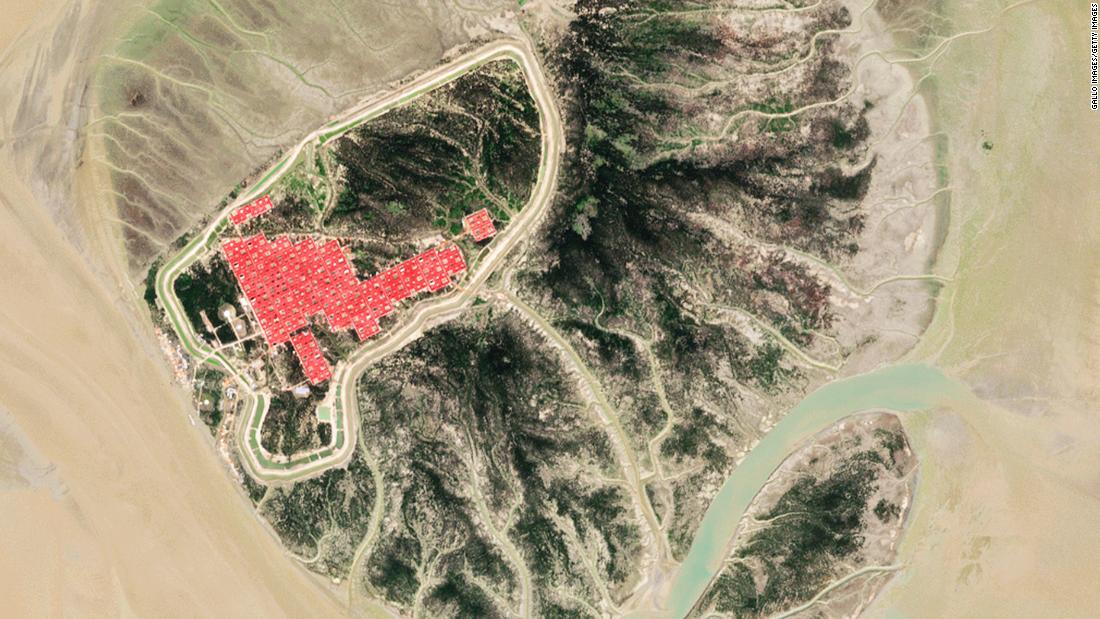A ship carrying 1,642 refugees is bound for Bhasan Char, an island about 40 kilometers (24 miles) off the coast near the city of Chittagong, according to Shahriar Alam, Bangladesh’s Minister of State for Foreign Affairs.
The Bangladeshi government has spent years building a network of shelters on the island to hold up to 100,000 people currently living in the sprawling refugee camps of Cox’s Bazar, near the border with Myanmar.
But human rights groups and refugees themselves have long since They expressed concerns about the safety of the uninhabited, low-lying island, as it is often partially submerged during the monsoon season and is prone to hurricanes.
Human Rights Watch described conditions on the island as “poor” as the Rohingya likely face a lack of adequate medical care. The group also expressed concerns that refugees there could be denied freedom of movement, sustainable livelihoods or education. It is also unclear what role – if any – humanitarian agencies will be allowed to play there.
“Without proper assessments and adequate information for refugees about conditions on the island, this step is nothing short of a dangerous mass detention of Rohingya in violation of international human rights obligations,” said Daniel Sullivan, the group’s chief human rights advocate.
The Bangladeshi foreign minister said he did not understand why aid agencies were against this step, describing the reports of coercion as “totally baseless.”
“I simply don’t understand,” Allam said. “Why would they oppose a better life for them when they failed miserably in doing their job?”
Limited participation of the United Nations
The government has been building facilities in Bhasan Shar for several years to relieve pressure on the overcrowded camps in Cox’s Bazar, which are home to nearly a million Rohingya refugees.
Many refugees from Myanmar fled to Bangladesh to escape a violent military campaign in 2017 that led the International Court of Justice in The Hague to order Myanmar to protect the Rohingya population from genocide. Myanmar denies the accusations of genocide and asserts that the army’s “cleansing operations” are legitimate counter-terrorism measures.
“Rohingya refugees should be able to make a free and informed decision on relocation to Bhasan Shar based on relevant, accurate and up-to-date information,” the statement said.
“Any transfer to Basan Shar should be preceded by comprehensive assessments of technical protection. These independent UN assessments will review the safety, viability and sustainability of Basan Shar as a place for refugees to live, as well as the protection, assistance and services framework they can access on the island.”
Hospitals and schools
Alam said that 933 Rohingya refugees left the camps in Cox’s Bazar on Thursday for Chittagong, and more than 400 are expected to travel on Friday. Bangladesh Foreign Minister.
The two groups are then expected to travel two and a half hours on board a naval ship to Bhasan Shar.
The island can hold up to 100,000 people in 120 shelters, according to Bangladeshi Navy Commander Abdullah Al-Mamun Choudhury, Bhasan Shar Island Project Manager.
Each shelter can hold 800 to 1,000 people, he said, and each family will have a 12-foot by 14-foot (3.6 meters by 4.3 meters) unit with bunk beds.
Chowdhury added that the shelters were set up 14 feet above ground level “in the event of any hurricanes” and could withstand winds of up to 260 kilometers per hour (161 miles per hour). There are also two 20-bed hospitals, as well as community clinics, medical staff on site, and three schools.
“We are ready in all respects,” Chowdhury said. “We take care of food, medicine and safety.”
Fears of forced repatriation
Bangladesh confirmed that the resettlement process would be voluntary, but several rights groups raised concerns that refugees could be subjected to coercion.
Human Rights Watch said that about a dozen families said their names were on the list of people identified willing to go, but who had not volunteered to move. There are reports that some of the refugees on the list have fled in fear of forcible resettlement.
“The government of Bangladesh actively reverses its promise to the United Nations not to transfer any refugees to Bhasan Shar Island until humanitarian experts give the green light,” said Brad Adams, Asia director at Human Rights Watch. “If the government is truly confident in the island’s habitability, it will be transparent and will not be in a hurry to circumvent the UN technical assessments.”
Fortify Rights reported that some Rohingya in Cox’s Bazar camps have been told by unelected Rohingya camp leaders that they could be in the first line to return to Myanmar if they went to Bhasan Shar.
Choudhury said the government decided to return some of these people to Cox’s Bazar because “the families have broken up.” He said that many of the refugees on the island were women who wanted to be reunited with their relatives.

Typical creator. Subtly charming web advocate. Infuriatingly humble beer aficionado.

